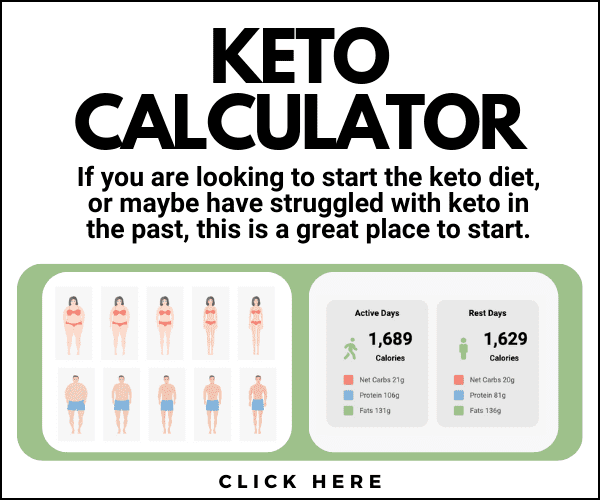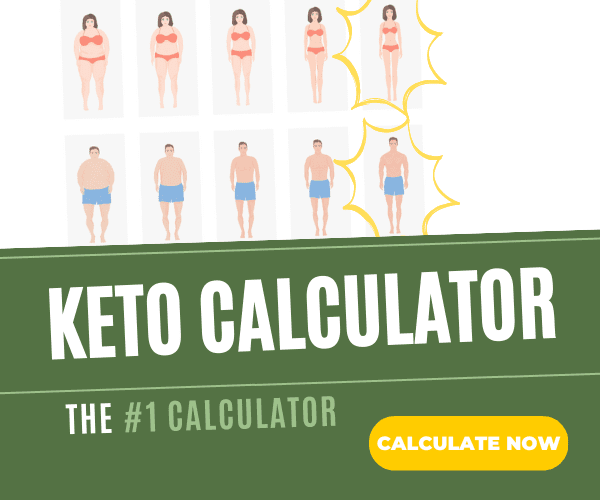
Our modern world embraces both feasting and frequent snacking and eating, often to the point of gluttony. People also tend to gorge on processed, sugar-loaded junk foods that are a far cry from the nourishing whole foods your body truly craves.
The opposite of feasting is fasting and abstaining from eating. You might have heard about the benefits of fasting. Many people fast for religious reasons during Lent or Ramadan, and others fast for health or fitness reasons. Plenty of keto dieters experiment with different types of fasting. If you’re interested in learning more about this practice, this article is the ultimate guide to fasting.
What Is Intermittent Fasting?
Fasting refers to periods of time when you don’t eat and instead give your digestive system a break. Intermittent fasting is a way of eating where you limit your food consumption to particular hours of the day. Fasting isn’t just a popular fitness trend currently under the spotlight; there are genuine benefits to incorporating intermittent fasting into your ketogenic lifestyle. Ample scientific research backs up the effectiveness of intermittent fasting for weight loss and various health conditions.
Fasting specifies when you should eat rather than what you should eat, so it’s considered an eating pattern rather than a diet.
An Ancient Practice
Throughout human history, our hunter-gatherer ancestors went through periods of feasting and fasting because they didn’t always have food available to eat. They couldn’t drive to the local supermarket, and they didn’t have refrigerators or packaging to keep food fresh. There were no convenience stores or vending machines. Humans evolved to live without food for extended time periods.

If you think about it, fasting is actually more natural than snacking and eating three or more large meals throughout the day.
Islam, Christianity, Buddhism, and other religions incorporate fasting. In these religions, families refrain from eating for a time period before enjoying meals and feasting together.
People use fasting to combat weight gain and lose stubborn body fat and to normalize high insulin levels, insulin resistance, high blood pressure, and cholesterol levels. Fasting is convenient when traveling or during a busy day because you don’t have to think about your next meal.
When hunger strikes, it sparks a warning bell in our brain, and it’s uncomfortable, so we search for food. Many of us end up eating numerous times throughout the day and staying trapped in this cycle.
However, what you eat and when you eat impacts your metabolism and hunger hormones. When you change your eating patterns, follow a ketogenic lifestyle, and incorporate fasting, you’ll likely find your metabolism improves, and you’re less hungry throughout the day as your hunger hormones stabilize. The more metabolically adapted you become and the more stable your blood sugar and hunger hormones, the better you can handle fasting.
What Are the Different Methods of Intermittent Fasting?

One method is to fast for 24 hours twice a week. Another popular method is fasting for 14-16 hours every day. Metabolically adapted people with extra body fat might choose to fast for several days at a time. There are different ways to incorporate intermittent fasting, and it’s up to you to determine what feels best for your body. Here are some of the most common methods:
Eat-Stop-Eat
With the eat-stop-eat method, you fast for 24 hours once or twice a week. For example, you could fast from breakfast on Monday until breakfast on Tuesday.
16/8
16/8 or the “leangains protocol” is the most popular and perhaps one of the easiest to follow and fit into a busy schedule. 16/8 involves skipping breakfast and only eating for 8 hours during that day. After your 8-hour eating window, you fast for 16 hours.
5:2
The 5:2 method is more of a caloric restriction where you eat normally five days of the week, and you reduce your calorie intake and only consume 500-600 calories on the other two days of the week (or you can fully fast on those days, aiming for zero calorie intake). Make sure you aren’t overeating on the other five days of the week, and stick to normal-sized portions.
OMAD
One meal a day (OMAD) means picking just one meal a day to eat and fasting for the rest of the day. Many people choose to eat only dinner, for example, and strive to eat at or slightly below their maintenance calories during that meal.
Alternate Day Fast
Alternate-day fasting (ADF) means fasting every other day until you reach your desired weight. Most people start alternate-day fasting for weight loss. You might consider ADF to reach your goal weight, then switch to a different type of fasting, such as OMAD, to maintain your weight. Research shows that implementing alternate-day fasting for 12 weeks resulted in 11.5 pounds of fat loss on average, and the study participants also maintained their lean muscle mass. [1]
Multi-Day Fast
Multi-day or extended fasting simply means fasting for a longer period of time, typically two days or longer. Ghrelin is the hormone that signals that you’re hungry, and ghrelin peaks on day two of fasting, making the second day the most difficult. After day two, the ghrelin hormone starts to decline, and fasting gets a little easier. Many people fast for three days, five days, seven days, and sometimes even longer. Most health experts recommend that fasting beyond four or five days is done under medical supervision.

Fasting beyond 36 hours brings accelerated benefits, but it may not be suitable for everyone, particularly for those dealing with chronic illness and poor metabolism. Fasts that are three days or shorter are easier to fit into your schedule and to make a regular part of your lifestyle.
What Are Wet and Dry Fasting?
Wet fasting involves drinking water only, whereas dry fasting involves abstaining from both food and drink, which is particularly difficult. Dry fasting isn’t usually recommended, especially for longer time periods. Wet fasting gives your body important hydration.
During water fasting, people often add electrolytes and mineral powders to their water or consume herbal teas, black teas, or coffee. Unsweetened tea and black coffee have very minimal calories (less than five calories), so they shouldn’t kick you out of ketosis. To avoid spiking your blood sugar, it’s best not to add any sweetener, but some people add a small amount of cream. Many people find the caffeine gives them the mental and physical boost they need to continue fasting, while others are fasting purists and choose to stick to water and unsweetened electrolyte powder. It’s up to you how you’d like to fast, and it may take some experimentation to discover what feels best for you.
You might decide to drink both water and bone broth when fasting for added minerals. Bone broth provides glutamine, which has been proven to improve gut health. Bone broth has minimal protein and calories and virtually zero carbohydrates, so a little bone broth won’t hinder the fat-burning and metabolism-boosting benefits of ketosis and fasting. Countless people with inflammatory autoimmune disorders and digestive issues claim that fasting with just water and mineral-rich bone broth greatly improves their symptoms and general wellness.
Can You Take Supplements While Fasting?

You may be one of those people that can’t stomach supplements without food. In that case, it’s best to take them during your eating window.
Fasting can influence the way your body absorbs specific vitamins and medications. You can take some supplements on an empty stomach, such as:
- Creatine
- Electrolytes
- L-tyrosine
- Probiotics
- Prebiotics
- Water-soluble vitamins like B and C
While fat-soluble vitamins require dietary fat for proper absorption, water-soluble vitamins dissolve in water, so you can take them while fasting. B-complex vitamins can make some people feel nauseated when consumed without food, so what you can tolerate depends on how you feel and your digestive health.
Check the label for the supplement manufacturer’s recommendations, or ask your doctor or medical provider if you’re unsure. Supplements like creatine that contain zero carbs or sugars won’t affect your insulin levels or meaningfully break your fast. Make sure your supplements and electrolyte powders don’t contain any added sweeteners or sugars.
Other supplements can break your fast or are best taken with food for absorption or ease of digestion, such as:
- Amino acids (like L-glutamine)
- Curcumin
- Omega-3 fatty acid
Chromium, vanadium, and other supplements can drop your blood sugar levels too low during a fast, which increases your risk of hypoglycemia.
Gummy vitamins are typically sweetened and made with gelatin protein, so they’re also likely to break a fast.
Protein powders like whey or collagen break your fast because they contain calories and protein. For example, this collagen protein powder from Vital Proteins provides 18 grams of protein in just two scoops.

How Does Intermittent Fasting Work for Weight Loss?
The most common reason that people try intermittent fasting is to lose weight. Eating fewer meals reduces your caloric intake. In addition, fasting improves hormonal imbalance, which facilitates weight loss. [2]
The insulin hormone is known as the fat-storage hormone that tells your body to hold on to fat. Insulin shuttles sugar into your cells, but when you’re not eating, your insulin levels drop lower and you’re also not telling your body to hold on to that extra body fat.
Fasting lowers insulin and increases growth hormone levels and the release of the fat-burning hormone called norepinephrine (noradrenaline). Due to these hormonal changes, studies show short-term fasting could ramp up your metabolic rate by 3.6-14%. [3] [4]
However, if you binge and eat huge amounts during your eating periods, you might counteract the weight loss results and hamper your success, so stick to healthier meals and normal-sized portions during your eating windows.
A 2014 review study revealed intermittent fasting can result in 3-8% weight loss over 3-24 weeks, which is considerably more weight loss compared to most weight loss studies. In this study, the participants lost 4-7% of their waist circumference, which indicates a loss of abdominal fat. The extra body fat inside the belly that encompasses your organs–called visceral fat–is associated with disease. [5]
What Happens to Your Cells When You Fast?
When you fast, fascinating changes take place on a cellular and molecular level. Your body alters your hormone levels to make stored body fat more accessible.
Human Growth Hormone (HGH)
When fasting, your levels of human growth hormone (HGH) increase up to five times, which brings plenty of advantages for muscle gain, fat loss, and more. [6] [7]
Insulin

As mentioned above, insulin is the fat-storage hormone that moves sugar into your cells to be used for energy, helping to prevent dangerously high blood sugar levels. When you eat sugar and, to a lesser degree, protein, your pancreas secretes the insulin hormone. Levels of insulin drop significantly when you follow a ketogenic diet because you reduce your sugar intake to a very low level. Your insulin levels also drop when you’re fasting because you’re not consuming food at all. Stored body fat is more accessible when you have lower insulin levels. Research reveals fasting might prompt the body to release the fasting-induced adipose factor (FIAF) protein, which also signals to your body that it’s time to burn fat. [8]
Fasting allows you to enter ketosis, in which you burn fat for fuel instead of sugar. Most people reach ketosis by fasting for just one or two day. [9]

Gene Expression
Your genes are similar to dimmer light switches that can be turned on and off. These genetic switches are influenced by several factors, including your environment and the food you eat. Genes can be expressed in ways that promote or worsen health. With fasting, studies show that positive changes occur in the functioning of genes related to longevity and protection against disease. Think of fasting as a way to turn on these light switches for positive gene expression. [10] [11]
Cellular Repair and Autophagy
When you’re fasting, your cells increasingly perform cellular repair processes and remove old dysfunctional proteins. [12] This is one of the reasons why fasting could be beneficial for cancer, because it encourages the body to begin clearing out dysfunctional cancerous cells.
What Are the Health Benefits of Intermittent Fasting?
Research is flourishing on intermittent fasting in both animals and humans. People report that extended and intermittent fasting helps them think, sleep, and function better. Here are just some of the many benefits:
Weight Loss
Ample research highlights that intermittent fasting can reduce body weight and belly fat. [13]
Inflammation
Studies on fasting reveal reductions in the key markers of inflammation. Inflammation is considered a primary driver of a range of chronic diseases. [14]
Insulin Resistance
Intermittent fasting reduces insulin resistance, which is also a main feature of metabolic syndrome. Studies show fasting reduced blood sugar by 3-6% and fasting insulin levels by 20-31%, which may be protective against type 2 diabetes.
Heart Health
You may already know the ketogenic diet provides plenty of benefits for your heart health, and incorporating intermittent fasting only amplifies these benefits. Studies conclude that intermittent fasting may decrease LDL cholesterol, blood triglycerides, blood sugar, insulin resistance, and inflammatory markers. [15]

Brain Health
Intermittent fasting has been shown to increase brain-derived neurotrophic factor (BDNF), which plays a huge role in supporting the growth and functioning of your brain cells. Intermittent fasting could protect against Alzheimer’s disease and aid the growth of new nerve cells. [16] [17]
Longer Lifespan
In impressive animal research, intermittent fasting extended the lifespan of rats. Fasted rats lived 36-83% longer. High-quality human studies are needed to further explore the potential advantages of fasting on longevity. [18]
Boosts Metabolism
Research shows short-term fasts boost metabolism. You know the ketogenic diet ramps up your metabolism, and fasting can build on those effects. [19]
Simplifies Your Healthy Lifestyle
Eating healthy can feel wonderful, but it can also feel overwhelming. Even with meal prepping, planning, delicious keto recipes, and convenient healthier snacks, from time to time, you might just wish you didn’t have to think about food at all. Fasting simplifies your healthy lifestyle because you don’t need to plan, cook, or clean up. When you’re fasting, you also know you’re promoting ketosis, which is bringing you closer to your health, fitness, and weight loss goals.
Can You Workout While Fasting?
Yes, you can work out while fasting. Adding exercise and fasting to your ketogenic lifestyle could further accelerate your progress toward your goals. Your body was designed to move, and the advantages of exercise are abundant. You might choose to take branched-chain amino acids (BCAA) or an electrolyte powder before your workout.
If you don’t feel you’re able to exercise on an empty stomach, you could try mapping your exercise around your eating windows. Maybe you feel better eating a smaller meal at least one hour before your workout. Lots of people like to exercise before breakfast and reward themselves with a healthy, tasty meal after.

To reap the most benefits, your fast should be at least 16-18 hours. Keep in mind that working out too close to bedtime could disrupt your deep REM sleep.
Is Fasting Safe for Everyone?
Some people with chronic health conditions may only be able to fast overnight for 12 hours, and others may have trouble fasting at all, especially if they have digestive issues. A smaller cohort of people fast for several days at a time, but they’re usually in good health with a properly functioning metabolism, and they have experience with fasting in the past. How well you tolerate fasting depends on several factors, like your metabolism, your mindset, your typical diet, and your overall health.
It’s best to start small, perhaps with a 16-hour overnight fast. For example, you stop eating at 7 pm after dinner, and you resume eating the following day at 11 am.
It’s best to talk to your doctor if you have health conditions and you’re considering fasting. Your doctor or healthcare practitioner can help you choose the best fasting method for you. You shouldn’t fast without discussing it with your medical provider first if you:
- Have a history of eating disorders
- Are overweight
- Have diabetes or issues with blood sugar regulation
- Have low blood pressure

Fasting isn’t typically advised for children. Some research highlights that fasting may be more beneficial for men than women. More human studies are needed, but animal studies show fasting worsened blood sugar control in women but improved insulin sensitivity in men. Older studies found fasting can cause female rats to become emaciated, miss cycles, and more. Women have reported they’ve missed cycles and felt worse fasting, especially around the time of their menstrual cycle. [20]
That being said, lots of women fast and report the benefits, and many monitor their blood sugar and report that fasting has improved their blood sugar regulation.
It might be best for women and anyone with a health condition to ease into fasting and stop if you feel too weak or experience problems like missing menstruation (amenorrhea).
Like the keto flu, these symptoms could be temporary while your body and metabolism adapt. Fasting is an ancient practice, and well-nourished humans should be able to go for periods of time without food.
Top Tips for Getting Started with Intermittent Fasting
If you’ve had dinner and slept late the next morning, only eating at lunchtime, you’ve completed a 16-hour fast. You may be one of those people that just doesn’t feel hungry in the morning, which will make intermittent fasting easy for you.
Skip Breakfast or Dinner
Take the first step and try skipping breakfast first, and if that doesn’t work, go for dinner instead. Start simple and slowly incorporate this practice into your ketogenic lifestyle.
Fast when it’s convenient for you, such as when you’re not hungry or don’t have time to cook. You don’t have to follow a specific plan to experience benefits. There’s no one-size-fits-all.
Drink Water
The more dehydrated you are, the more you’ll feel the hunger pangs and discomfort setting in. Make sure you’re drinking plenty of water and staying hydrated.
Stay Busy
Stay busy and entertained while fasting so your mind is less likely to wander into the realm of food. Focus on your favorite type of entertainment, like reading or watching TV, a phone call with a friend, or a brisk walk in nature.
Instead of using food and treats, reward yourself with a massage, a daily nap, that phone call with your old friend, and other moments that bring you joy. Remember, hunger comes in waves that can retreat just as quickly as they reach your shores, so ride the wave until the hunger passes, drink sparkling water or coffee, and distract yourself with something interesting.

Try Coffee
If you’re struggling with your energy levels and drinking water becomes mundane, you could drink coffee, which is also an effective appetite suppressant. Even if the goal is to completely rest and reset your digestive system with a water fast, you could get started by drinking unsweetened coffee.
Improve the Quality of Your Diet
When you’re not fasting, work on improving the nutritional quality of your food. Typically, the healthier your ketogenic diet, the better you’ll be able to handle a fast. Eating healthy natural foods that nourish your cells provides you with more strength and endurance to get through a fast.
References
Varady, K. A., Bhutani, S., Klempel, M. C., Kroeger, C. M., Trepanowski, J. F…Calvo, Y. (2013). Alternate day fasting for weight loss in normal weight and overweight subjects: A randomized controlled trial. Nutrition Journal, Alternate day fasting for weight loss in normal weight and overweight subjects: a randomized controlled trial | Nutrition Journal | Full Text (biomedcentral.com)
Johnstone, A. (2015). Fasting for weight loss: An effective strategy or latest dieting trend? Int J Obes (Lond), DOI: 10.1038/ijo.2014.214
Mansell, P., Fellows, I. W., & Macdonald, A. (1990). Enhanced thermogenic response to epinephrine after 48-h starvation in humans. Am J Physiol, DOI: 10.1152/ajpregu.1990.258.1.R87
Zauner, C., Schneeweiss, B., Kranz, A., Madl, C., Ratheiser, K…Lenz, K. (2000). Resting energy expenditure in short-term starvation is increased as a result of an increase in serum norepinephrine. Am J Clin Nutr, 71(6), DOI: 10.1093/ajcn/71.6.1511
Barnosky, A. R., Hoddy, K. K., Unterman, T. G., & Varady, K. A. (2014). Intermittent fasting vs. daily calorie restriction for type 2 diabetes prevention: A review of human findings. Translational Research, https://doi.org/10.1016/j.trsl.2014.05.013
Ho, K. Y., Veldhuis, J. D., Johnson, M. L., Furlanetto, R., Evans, W. S…Thorner, M. O. (1988). Fasting enhances growth hormone secretion and amplifies the complex rhythms of growth hormone secretion in man. J Clin Invest, 81(4), 968-975. DOI: 10.1172/JCI113450
Hartman, M. L., Veldhius, J. D., Johnson, M. L., Lee, M. M., Alberti, K. G., Samojilik, E., & Thorner, M. O. (1992). Augmented growth hormone (GH) secretory burst frequency and amplitude mediate enhanced GH secretion during a two-day fast in normal men. J Clin Endocrinol Metab, DOI: 10.1210/jcem.74.4.1548337
Grooteart, C., Van De Wiele, T., Roosbroeck, V., Posse-Miers, S., Vercoutter-Edouart, A. S., Verstraete, W., Bracke, M., & Vanhoecke, B. (2011). Bacterial modulation of the fasting induced adipose factor (FIAF) in an intestinal cell line model: A potential host-microbe crosstalk related to obesity. Commun Agric Appl Biol Sci, Bacterial modulation of the fasting induced adipose factor (FIAF) in an intestinal cell line model: a potential host-microbe crosstalk related to obesity - PubMed (nih.gov)
Albosta, M., & Bakke, J. (2021). Intermittent fasting: Is there a role in the treatment of diabetes? A review of the literature and guide for primary care physicians. Clin Diabetes Endocrinol, DOI: 10.1186/s40842-020-00116-1
Lija, S., Stoll, C., Krammer, U., Hippe, B., Duszka, K…Haslberger, A. (2021). Five days periodic fasting elevates levels of longevity related Christensenella and sirtuin expression in humans. Int J Mol Sci, DOI: 10.3390/ijms22052331
Wegmn, M. P., Guo, M. H., Benninon, D. M., Shankar, M. N., Chrzanowski, S. M…Brantly, M. L. (2015). Practicality of intermittent fasting in humans and its effect on oxidative stress and genes related to aging and metabolism. Rejuvenation Res, DOI: 10.1089/rej.2014.1624
Bagherniya, M., Butler, A. E., Barreto, G. E., & Sahebkar, A. (2018). The effect of fasting or calorie restriction on autophagy induction: A review of the literature. Ageing Res Rev, DOI: 10.1016/j.arr.2018.08.004
Welton, S., Minty, R., O’Driscoll, T., Willms, H., Poirier, D., Madden, S., & Kelly, L. (2020). Intermittent fasting and weight loss: Systematic review. Can Fam Physician, Intermittent fasting and weight loss: Systematic review - PubMed (nih.gov)
Wang, X., Yang, Q., Liao, Q., Li, M., Zhang, P…Abshirini, M. (2020). Effects of intermittent fasting diets on plasma concentrations of inflammatory biomarkers: A systematic review and meta-analysis of randomized controlled trials. Nutrition, DOI: 10.1016/j.nut.2020.110974
Yang, F., Liu, C., Liu, X., Pan, X., Li, X..Xing, Y. (2021). Effect of epidemic intermittent fasting on cardiometabolic risk factors: A systematic review and meta-analysis of randomized controlled trials. Front Nutr, DOI: 10.3389/fnut.2021.669325
Lee, J., Duan, W., Long, J. M., Ingram, D. K., & Mattson, M. P. (2000). Dietary restriction increases the number of newly generated neural cells, and induces BDNF expression, in the dentate gyrus of rats. J Mol Neurosci, DOI: 10.1385/JMN:15:2:99
Mattson, M. P., Moehl, K., Ghena, N., Schmaedick, M., & Cheng, A. (2018). Intermittent metabolic switching, neuroplasticity, and brain health. Nat Rev Neurosci, DOI: 10.1038/nrn.2017.156
Sogawa, H, & Kubo, C. (2000). Influence of short-term repeated fasting on the longevity of female (NZBxNZW) F1 mice. Mechanisms of Ageing and Development, Influence of short-term repeated fasting on the longevity of female (NZB×NZW)F1 mice - ScienceDirect
Mansell, P. I., Fellows, W., & Macdonald, I. A. (1990). Enhanced thermogenic response to epinephrine after 48-h starvation in humans. Am J Physiol, DOI: 10.1152/ajpregu.1990.258.1.R87
Heilbronn, L., Civitarese, A. E., Bogacka, I., Smith, S. R., Hulver, M., & Ravussin, E. (2005). Glucose tolerance and skeletal muscle gene expression in response to alternate day fasting. Obes Res, DOI: 10.1038/oby.2005.61










